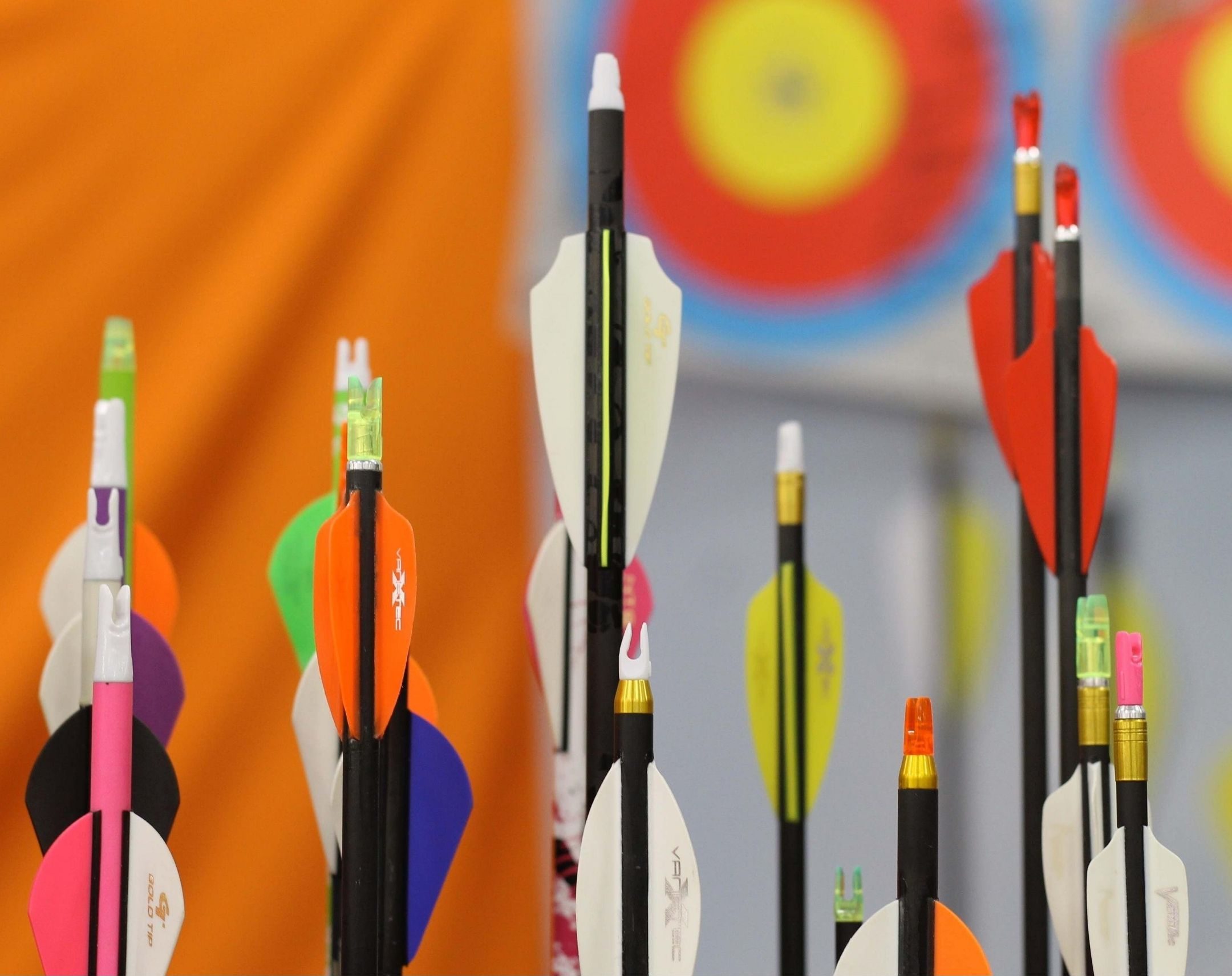Updated March 2023
Stiff, flexible, light, heavy, speed and penetration. These are all common words that hunters consider when deciding on a hunting arrow. Choosing the correct arrow spine for a compound bow can make a big difference in your accuracy and arrow groups. This is why it is important to shoot an arrow that is spined correctly for your specific bow. An arrow that is too flexible or too stiff will cause inconsistencies down range and lead to frustration.
When choosing a hunting arrow, spine rating is the most important aspect of selecting the correct arrow. No matter how good of a shot you are, you will never realize your full potential with an incorrectly spined arrow. This article will cover details and importance of arrow spine, what arrow spine numbers mean and how to choose the correct arrow spine for your bow.
Related: 10 Best Arrows for Bowhunting
What is Arrow Spine and Why is it Important?
As an arrow is released from a bow, the arrow shaft flexes due to the force applied by the bow string. In simple terms, the spine rating of an arrow is the measure of its stiffness. In other words, spine is the measurement of how much an arrow bends. An arrow with a higher spine number will tend to be more flexible and bend easier, whereas an arrow with a lower spine number will tend to be stiffer. Arrow spine ratings for compound bow arrows usually range anywhere from 200 to 700.
Spine is important for accuracy and consistency. You can spend top dollar on a brand-new bow, but if you are shooting arrows with an incorrect spine, you will quickly become frustrated due to inaccuracy. This is because spine rating determines how an arrow responds to a bow. If an arrow has too much flex, it will not recover correctly when released from the bow, resulting in inconsistent accuracy. Alternatively, if an arrow has a spine that is too stiff, it will be less forgiving when released from the bow and will go in different directions.
For high poundage bows, you want to use a stiff arrow (lower number). For low poundage bows, you want to use a more flexible arrow that will bend more. The key is finding the correct balance of peak draw weight and arrow spine for optimal performance.
What do Spine Numbers Mean?
- Spine Number – The spine number of an arrow refers to its flexibility, or degree of stiffness. Arrow shafts with a higher spine number, tend to be more flexible (ex: 500). Arrow shafts with a lower spine number, tend to be stiffer (ex: 300). In general, stiffer spines with a lower number tend to weigh more and have a heavier grains per inch of arrow length.
- GPI – GPI stands for “grains per inch” of arrow. This means that for every inch of an arrows shaft, it will weigh a certain amount. For most hunting arrows, GPI ranges from 8-10. This number is important if you want to build a heavy or light arrow.
- Straightness Tolerance – The straightness tolerance of an arrow is the measurement of the consistency in how straight each arrow is compared with one another. It also measures the consistency in how straight each arrow is. In general, the higher the number the cheaper the arrow and the less consistency in straightness there will be. Straightness tolerances are usually between +/-.006 (less consistent) to +/-.001 (more consistent).
For example, your average arrow usually have a straightness tolerance of +/-.003”. This means that in a pack of arrows, the shafts will all be within +/-.003” straightness of each other.
How to Choose the Correct Arrow Spine
- Arrow Length – The first step in choosing the correct arrow spine in determining your arrow length. This can easily be done by drawing your bow and having someone mark about an inch in front of your rest. Arrow length should be measured from the throat (deepest part) of the nock to the cut end of the arrow shaft. In general, the longer the arrow, the more flex it will have compared to a shorter, stiffer arrow.
- Bow Poundage – Next you will need to know your bow’s poundage. It is important you use your bow’s peak draw weight (heaviest part of draw cycle), not let-off. This can be done by taking your bow to a local archery shop or can be done at home with a draw weight scale or luggage scale. Higher poundage bows will shoot better with arrows that have a lower spine rating (250-350 spine), whereas lower poundage bow will shoot better with high spined arrows (500+).
- Point Weight – The weight of your arrow tip also plays a role in choosing the correct spine. Point weight influences how much a shaft flexes, with heavier points causing an arrow to flex more. Most arrow spine ratings are based off of a 100-grain point.
- Manufacturer’s Spine Chart – To determine the correct arrow spine, all arrow manufacturers have different arrow selection charts that will tell you which spine is best for your arrow length and bow poundage. Most charts assume you are using a 100-grain point. These charts can be found on the websites of most manufacturers. For example, Easton’s arrow chart can be found here.
As you have read above, choosing the correct spine is the most important aspect of determining the right arrow for you. By using arrows that are correctly spined for you bow setup, you will ensure that you are getting optimal performance out of your gear. Furthermore, shooting arrows with the correct spine will result in better accuracy and allow for tighter arrow groups. For more articles and buyer’s guides, please check out other posts from Bowhunting Depot!

